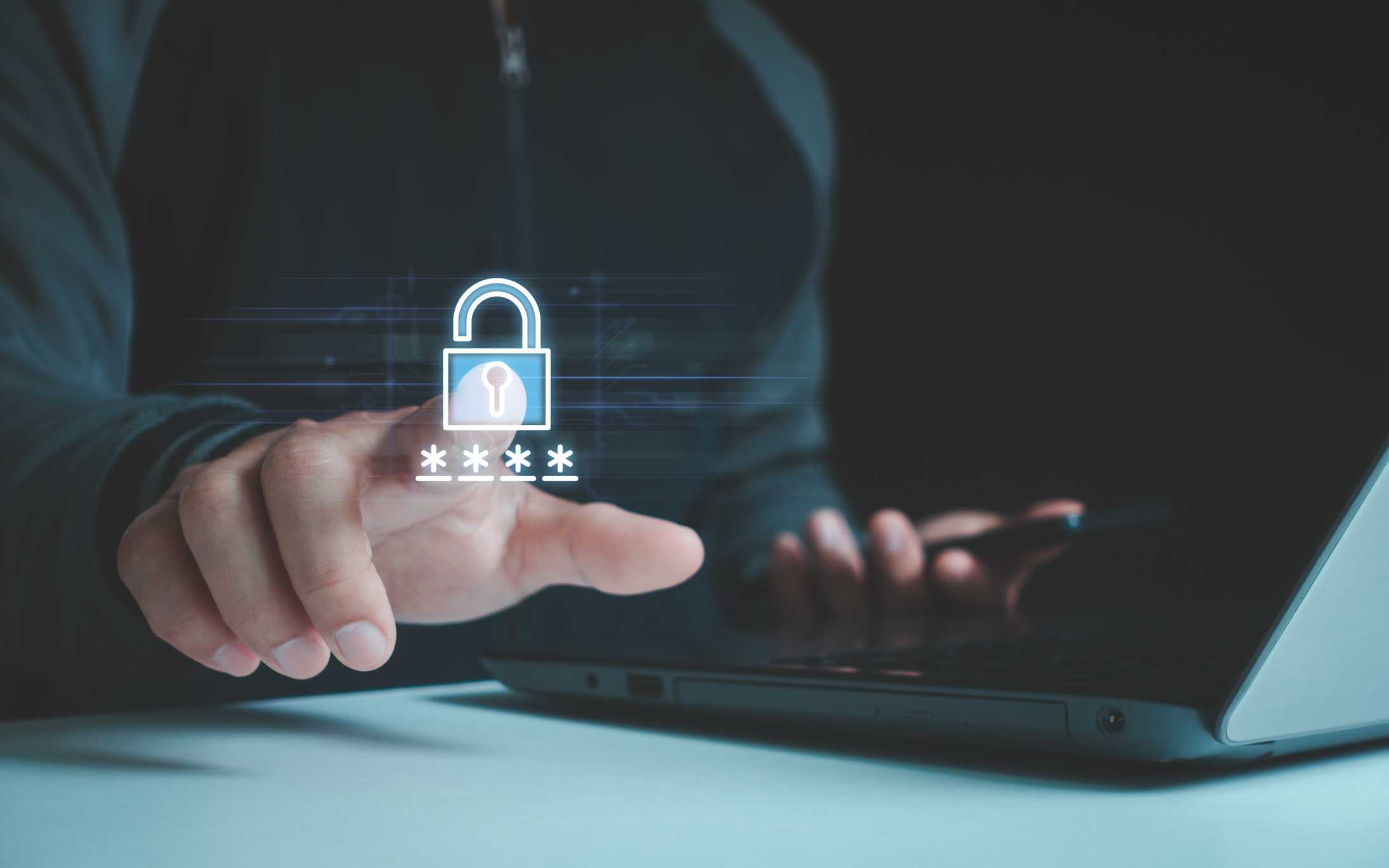How to Create a Ransomware Incident Playbook
Understanding the Threat Landscape: The Importance of Ransomware Preparedness
Ransomware incident playbook creation is a critical process for any organization concerned about the threat landscape of cybersecurity. As we at Alvaka have learned, threats are ever-evolving and the need for preparedness cannot be overstated. Ransomware, a type of malware that encrypts user data and demands payment for the decryption key, has become a prominent threat to businesses of all sizes. It can strike without warning, leaving unprepared businesses in a state of operational paralysis. This is why understanding the importance of a comprehensive incident response plan tailored to ransomware attacks is paramount.
Defining the Ransomware Incident Playbook: A Roadmap to Resilience
The ransomware incident playbook is not just a document; it’s a roadmap that guides our teams through the chaos of a ransomware attack. It encompasses not only technical response actions but also includes processes for decision making, communication, and recovery. Crafting this playbook is a meticulous process that leverages our expertise in IT management and network services. We aim to ensure that our playbook is a living document, one that evolves with emerging threats and the changing landscape of our industry.
The Fundamental Goals of Ransomware Incident Playbook Creation
During the ransomware incident playbook creation, our primary goals are clear: to minimize damage, restore operations swiftly, and prevent future incidents. To achieve these, we focus on several strategic objectives. Firstly, the quick isolation of infected systems to contain the spread is paramount. Secondly, maintaining clear lines of communication within our organization and with external stakeholders is crucial to manage the situation effectively. Lastly, understanding the legal and regulatory implications of a ransomware attack helps us navigate the complex landscape of compliance and data protection, ensuring we have a robust framework for resilience.
Identifying Key Components of a Comprehensive Ransomware Incident Playbook
A comprehensive ransomware incident playbook encompasses a wide range of components. It starts with a thorough risk assessment to understand where our vulnerabilities lie. We identify critical assets, define potential impact scenarios, and outline specific containment and eradication strategies. Additionally, our playbook incorporates detailed recovery procedures to quickly restore data from backups and return to normal operations. We also integrate communication plans that specify who should be notified, including stakeholders, customers, and possibly law enforcement, depending on the severeness of the incident.
Establishing Communication Protocols and Roles During Ransomware Incident Playbook Creation
Effective communication is the backbone of our incident response efforts. In our ransomware incident playbook, we outline clear communication protocols and define roles and responsibilities for an organized response. This protocol ensures that all team members know their duties and whom to contact at each stage of an event. We engage with executives to ensure leadership is informed and prepared to make critical decisions, and our IT staff is trained to execute technical recovery tasks under pressure.
Ransomware Simulation and Training: Essential Steps for Effective Ransomware Incident Playbook Creation
Ransomware simulation exercises and comprehensive training are integral to validating the effectiveness of our incident playbook. By regularly testing our response capabilities, we help our team become familiar with their responsibilities in the event of an actual attack. This ensures that when faced with a real-world ransomware scenario, our staff can respond with confidence and efficiency, reducing downtime and mitigating the potential impact. Our proactive stance not only enhances our resilience but also reinforces a culture of cybersecurity awareness across the organization.
Identifying Key Components of a Comprehensive Ransomware Incident Playbook
As leaders in IT management and network services, we understand that the crux of robust cybersecurity defense lies in meticulous preparation. Integrating a variety of critical components contributes to the robustness of ransomware incident playbook creation. First, we prioritize the identification of sensitive assets and critical systems within the organization – knowing what to protect is paramount. Furthermore, we map out potential attack vectors and entry points used by cybercriminals, reinforcing our client’s security posture.
Our approach incorporates the development of a detailed response plan that outlines specific actions to be taken by designated teams during a ransomware attack. Benchmarking these protocols against industry standards, we ensure the playbook is not only comprehensive but also adheres to legal and compliance requirements. Incident detection procedures, escalation paths, and recovery strategies form the backbone of our tailored playbooks, offering clear guidance in the midst of a security crisis.
Ransomware Incident Playbook Creation: Establishing Communication Protocols and Roles
In any ransomware scenario, clear communication can mean the difference between contained incidents and full-blown crises. Hence, we integrate unambiguous communication protocols and well-defined roles in the ransomware incident playbook creation process. Each member of the organization is made aware of their responsibilities and how they should communicate during an incident. Not only does this streamline containment efforts, but it also helps in preserving evidence for forensic analysis and compliance reporting.
Additionally, our engagement ensures that external communication strategies are not an afterthought. We advise on liaising with law enforcement, informing stakeholders, and managing public relations, all while keeping the breach as contained and confidential as possible. Regular updates, coordinated by a centralized communication hub, keep all channels informed without compromising the efficiency of the response.
Ransomware Simulation and Training: Essential Steps for Effective Ransomware Incident Playbook Creation
A ransomware incident playbook is only as good as the people enacting it. Recognizing this, we integrate simulation exercises and comprehensive training programs into our service offerings. These simulations provide a practical touch to theoretical knowledge, allowing staff to experience firsthand the stress and decisions required during an actual ransomware event. Conducting regular drills reinforces the procedures and protocols outlined in the playbook, ensuring that when an attack does occur, our clients are not caught off guard.
Our structured approach to simulation includes a variety of scenarios that cover different types of ransomware attacks and responses. This not only prepares teams for a wide range of possibilities but also contributes to the continuous improvement of the playbook. We assess the responsiveness, decision-making, technical capabilities, and recovery time objectives, subsequently refining the playbook to heighten our clients’ cybersecurity defenses.
- Asset identification and protection prioritization
- Mapping potential attack vectors and entry points
- Developing detailed response plans with clear action steps
- Defining communication protocols and individual roles
- Conducting regular ransomware simulation exercises
- Providing comprehensive training programs for staff
- Collecting feedback for continuous ransomware incident playbook improvement
Did you know? Regular ransomware simulation and training can reduce incident response time by up to 70%, making a well-crafted Ransomware Incident Playbook essential.
Revisiting and Updating Your Ransomware Incident Playbook: Keeping It Relevant
At Alvaka, we recognize that the digital threat landscape is ever-evolving, and staying ahead of potential threats is vital. This is the impetus behind regularly revisiting and updating our ransomware incident playbook. We firmly believe in the necessity of maintaining the currency and effectiveness of our strategies, ensuring that businesses can swiftly respond to and recover from incidents. Our proactive approach involves analyzing new threats, refining response tactics, and incorporating fresh insights into our playbook. We do this with the understanding that a static playbook might quickly become outdated, leaving businesses vulnerable to the latest schemes deployed by cyber adversaries.
Measuring the Effectiveness of Your Ransomware Incident Playbook
Knowing the capability of your ransomware incident playbook to withstand real-world scenarios is essential. At Alvaka, we establish quantitative and qualitative metrics to gauge our playbook’s effectiveness. We look at response times, recovery objectives, and stakeholder satisfaction to assess the efficiency and thoroughness of our response. Additionally, we incorporate lessons learned from exercises and actual incidents to enhance our playbook continually. It’s not just about creating a plan; it’s about ensuring it works under pressure and achieves the goals of minimizing disruption and facilitating swift ransomware recovery.
Encouraging a Culture of Cybersecurity Awareness Beyond the Ransomware Incident Playbook
At the heart of our strategy is the understanding that a ransomware incident playbook creation is but one element of a broader culture of cybersecurity awareness. At Alvaka, we champion ongoing education, promoting awareness across every level of the organization. By doing so, we empower our team and our clients to become active participants in safeguarding their environments. We provide training programs, updates on emerging threats, and best practices for digital hygiene. By ingraining a collective mindset that prioritizes cybersecurity, we build a robust first line of defense against cyber threats, complementing the detailed plans outlined in our ransomware incident playbook. This approach means that every member of the organization is equipped to play a role in the prevention of ransomware incidents, making our collective cybersecurity posture that much stronger.
FAQ
What is a Ransomware Incident Playbook? ▼
A Ransomware Incident Playbook is a comprehensive guide designed by our organization to prepare for, respond to, and recover from a ransomware attack. It outlines strategies, roles, and procedures to efficiently manage the crisis and minimize damage.
Why is ransomware preparedness important? ▼
Ransomware preparedness is crucial because ransomware attacks can result in severe disruption of services, data loss, and financial consequences. By being prepared, we can significantly reduce the impact of such incidents on our operations and reputation.
What are the main goals of creating a Ransomware Incident Playbook? ▼
The main goals include establishing a clear response plan, minimizing the duration and impact of a ransomware incident, and ensuring business continuity. Additionally, we aim to protect our sensitive data and maintain trust with our stakeholders.
What are the key components of a Ransomware Incident Playbook? ▼
Key components include identification of critical assets, communication protocols, roles and responsibilities, step-by-step response actions, recovery processes, and post-incident review mechanisms. Furthermore, we consider legal and regulatory obligations.
How do we establish communication protocols during a ransomware incident? ▼
We designate specific communication channels and assign team members to manage internal and external communications. Consequently, this ensures that accurate information is relayed without delay to the appropriate parties throughout the incident.
Are ransomware simulations important in Playbook creation? ▼
Yes, ransomware simulations are essential as they allow us to test and refine our Playbook in a controlled environment. Additionally, these exercises enhance our team’s responsiveness and ensure that our Playbook is practical and effective.
How often should we revisit and update our Ransomware Incident Playbook? ▼
Our Playbook should be revisited and updated regularly, at least annually or whenever there are significant changes in our infrastructure, threat landscape, or industry regulations to ensure its relevance and effectiveness.
How can we measure the effectiveness of our Ransomware Incident Playbook? ▼
Effectiveness can be measured through regular testing, employee training performance, incident response speed, and ability to return to normal operations quickly after an incident. Furthermore, feedback from simulations and real incidents should be incorporated to improve the Playbook.
What is the role of cybersecurity awareness in combating ransomware? ▼
Cybersecurity awareness plays a pivotal role in preventing ransomware attacks by educating our teams about potential threats, best practices, and detection methods. Accordingly, this culture of awareness complements our Playbook and strengthens our overall defense.
How do we ensure that all employees understand their role in the Ransomware Incident Playbook? ▼
We conduct comprehensive training sessions and regular briefings so that all employees are aware of the Playbook procedures. Moreover, we ensure that each staff member understands their specific responsibilities during an incident.







